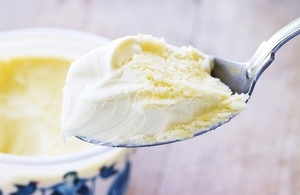Reviving Victorian traditions: how we are protecting our Great British delicacies
The Victorian legacy left us a host of uniquely British ingredients, and many of them have been awarded protected food name status.

As the Great British Bake-off looks at Victorian cooking, amateur chefs can recreate recipes from this iconic era at home by drawing on uniquely British ingredients which have been awarded protected food name status.
From Yorkshire Rhubarb to Fenland Celery, Traditional Bramley Apple Pie Filling to Jersey Royals, many of the 64 UK protected food names were popularised by the Victorians.
Traditional pastry dishes such as Melton Mowbray Pork Pies and Cornish Pasties were a staple of the Victorian diet for many. Baking a Victorian pie provides the perfect opportunity to pair regional specialities from the list like Scotch Beef with Kentish Ale or Gloucestershire Old Spots Pork and Herefordshire Cider.
This summer Traditional Bramley Apple Pie Filling became the latest UK product to be recognised under the EU scheme. Businesses awarded with Protected Food Name status have reported a boost in sales, helping power local economies, increase employment and drive up tourism. These are estimated to have already contributed more than £900 million to the European economy.
Environment Secretary Elizabeth Truss said:
Iconic British foods that we have enjoyed since Victorian times are experiencing a resurgence in popularity, and more people are experimenting with recipes using protected foods
The UK has the most diverse list of protected food names in Europe, embracing every part of the UK—from cheese made on Orkney, rhubarb from Yorkshire, to the world-famous Cornish pasty. Legally protecting these foods uses our proud food heritage to bring greater investment, jobs and tourism to local communities.
The British brand is recognised globally for its quality and traceability, and protected food names can make that brand even stronger. We are championing more British delicacies to be awarded with this prestigious status, giving the nation’s bakers even more delicious, high-quality protected ingredients to choose from.
Great Victorian protected food names
Create your own Victorian feast with ingredients that draw on traditional production methods, ancient landscapes and local customs. The full list of UK protected food names can be found online, but we’ve suggested some Victorian favourites to seek out this week—all to be seasoned with a pinch of Anglesey Sea Salt.
-
Apple pie is a British classic, with recipes going back to the time of Chaucer. Traditional Bramley Apple Pie Filling became the latest protected food name to be registered earlier this year, and must be made according to a particular recipe which dates back to the 1880s and remains unchanged. Take it to the next level by using Armagh Bramley Apples.
-
Afternoon tea was a Victorian invention to fill the gap between lunch and later dinner times. No afternoon tea is complete without scones, jam and Cornish Clotted Cream, which gained its protected status in 1998.
-
Yorkshire’s rhubarb triangle is home to Yorkshire Forced Rhubarb, which was sent to London and Paris for Christmas in the late nineteenth century on a special express train that left from Ardsley station every night during the rhubarb season—at its peak it carried up to 200 tons of rhubarb sent by up to 200 growers.
-
Fenland Celery was a fashionable winter delicacy, transported from East Anglia to grace the dinner tables of London every Christmas. The main variety grown today, Dwarf White, was developed over 100 years ago.
-
East Kent Goldings have been sold under that name since 1838, grown exclusively in East Kent by a handful of growers. In the 1870s Kent was home to 46,600 acres of hops—today only 1,000 survive, including the East Kent Golding, which is one of the local varieties used to make Kentish Ale, another protected food name.